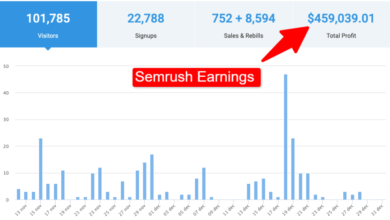How to know the winning product in ecommerce

Introduction
Ecommerce can be as competitive as juggling knives. The stakes are high, and only the fittest products survive. Launching a new product is a gamble – you can
ace the timing or crash and burn. So how can an ecommerce business stack the odds in their favor?
This article will outline practical strategies to assess market viability and validate if your product is a winner before going all-in on production. We’ll
cover ways to:
- Understand your target audience
- Evaluate market and competitor trends
- Validate product-market fit
- Assess production costs and sourcing
- Project demand
- Mitigate risks
Follow these steps to give your product the best shot at success in the ecommerce arena. Let’s dive in.
Understand Your Target Audience
Before developing a new product, it’s crucial to have a deep understanding of who your target customers are. Thorough market research into your audience demographics, psychographics, needs, wants, and buying behaviors will ensure you create a product that truly resonates with them.
The first step is developing buyer personas – semi-fictional representations of your ideal customers based on real data and insights. Well-defined personas should include demographic information like age, location, gender, income level, education, occupation and marital/family status.
You’ll also want to dive into psychographic details like personality traits, values, attitudes, interests, lifestyle and motivations. What pain points does your audience have? What problems do they need solved? What product benefits are most appealing to them? How do they want to feel when using your product?
Consumer surveys, interviews, focus groups and reviewing user-generated content can provide further intelligence. Analyze the features and messaging your audience gravitates towards. Look for patterns in the types of products they currently use and where they are underserved. The goal is to uncover both explicit and latent needs to conceptualize an offering that truly delights them.
With a clear picture of who you are serving and what they desire, you can innovate products tailored specifically for your customers. This laser focus will give your winning product an advantage right from the start.
Evaluate Market Trends
When evaluating market trends, it’s important to have your finger on the pulse of what’s currently popular as well as what trends are emerging or fading. This helps identify potential product opportunities or areas that may already be saturated.
Some ways to evaluate current market trends:
- Look at bestsellers lists on major ecommerce sites like Amazon to see what products are topping the charts in various categories. Are certain types of products repeatedly making the list?
- Check social media platforms like Instagram and TikTok to observe what products are frequently touted by influencers or going viral through user shares. Viral products indicate a potential rising trend.
- Use Google Trends to analyze search volume over time for relevant product keywords. Spikes in searches can signal growing interest.
- Read market research reports that overview consumer behaviors, popular products, and retail sales across industries. Many analysts forecast future trends.
- Sign up for newsletters of sites like TrendHunter that specialize in spotting emerging trends across fashion, technology, designs, and more.
- Attend major trade shows for your industry to see the latest product innovations and developments. Ask exhibitors what they see trending.
- Check industry/consumer surveys that ask people about their buying interests and future purchase plans.
Assessing both current popular products along with shifts you see gaining momentum will help determine products that are poised for growth versus those that may be nearing saturation. Focus on trends that align with your target customer and products that can delight emerging consumer demand. Ride the rising waves and avoid investing in fading fads. Evaluating trends thoroughly reduces risk and reveals openings in the market.
Analyze Competitor Products
When launching a new product, it’s important to thoroughly analyze what your competitors are selling. This market research will reveal gaps or opportunities in the marketplace that your product can potentially fill.
First, make a list of your 3-5 top competitors in the niche you want to enter. Search on ecommerce marketplaces like Amazon, Etsy, eBay, etc. to find the top-selling items and brands. Look at factors like product features, pricing, ratings and reviews.
Evaluate the strengths and weaknesses of competitor products objectively. What do customers like or dislike about them based on reviews? Does a certain feature seem lacking across the board? Are there any areas where competitors are ignoring customer needs or demands? Finding these gaps can help position your product differently.
Aim to differentiate your product in some way. Offer something competitors don’t have, whether it’s a lower price point, better quality, unique features, superior branding, etc. You don’t have to be radically different, but some element should set your product apart and make it stand out.
Carefully considering what’s already on the market will ensure your product launches in a niche where it can succeed and claim market share. Analyzing competitors helps validate that customers want what you plan to offer. It also identifies opportunities to meet buyer needs even better.
Validate Product-Market Fit
Validating product-market fit is a crucial step before developing a new product. It helps ensure there is sufficient demand for your idea and that it solves a real customer need.
The most effective way to validate product-market fit is to survey your target audience. Develop a survey that outlines your product concept and asks specific questions to gauge interest and demand. Important questions to ask include:
- How interested would you be in a product like this?
- How much would you pay for this product?
- How often would you use a product like this?
- What features would you expect this product to have?
- What problem does this product solve for you?
- Who do you think the target customer is for this product?
Make sure to survey a statistically significant sample size of your target demographics. If the majority indicate they would buy or use your proposed product, you can validate there is market demand.
You may also want to conduct customer interviews to get qualitative feedback. This allows you to have more in-depth conversations to truly understand if your product aligns with customer needs.
Validating demand exists for your product idea minimizes risk before expending resources on development and launch. It gives you confidence you are creating a winning product that will sell once it hits the market.
Evaluate Production Costs
When assessing whether a product will be a winner, it’s crucial to evaluate the full production costs involved. This includes:
- Product costs: What are the costs to source or manufacture the product? Break down all materials, labor, and overhead. Get quotes from manufacturers or suppliers. Compare costs of alternate materials or production methods.
- Shipping costs: Factor in costs to ship the product from manufacturers to your warehouse, as well as outbound shipping costs to customers. Consider weight and dimensions. Compare shipping methods like air vs sea.
- Margins and pricing: Determine the minimum margin you need to profit from the product. Work backwards from your margin goal to set a wholesale price, then determine if the resulting retail price will be competitive and affordable for customers. Benchmark competitors.
- ** Economies of scale:** Estimate sales volumes, then evaluate how increased production quantities could lower per unit costs through bulk discounts on materials and larger production runs. What volumes are needed to achieve economies of scale?
- Duties and taxes: Account for any import duties, customs fees, or taxes applicable to manufacturing the product or shipping it. These vary by country.
Carefully calculating total production costs is essential to setting an optimal price that maximizes profit margins while remaining competitive. Continuously evaluate ways to lower costs through process improvements, alternate materials, increased automation, or changed suppliers. Managing production costs will directly impact the product’s success and profitability.
Assess Difficulty Sourcing/Making
When deciding whether a product will be a winner, it’s important to realistically assess how difficult it will be to source or manufacture. More complex products that have many intricate components or dependencies will naturally be more challenging to produce.
Consider the product complexity. How many parts does it have? Do the parts require specialized skills or equipment to produce? Are there electronic components that need programming? The more convoluted the product, the higher the likelihood of production issues arising.
Also examine dependencies. Does the product rely on partnerships with suppliers to acquire rare or customized materials? Are there components or ingredients that are scarce or produced by just a few vendors? If so, this scarcity could constrain the ability to manufacture at scale. Relying heavily on a single supplier is risky.
Partnerships with contract manufacturers should also be evaluated. If the product requires an uncommon manufacturing process, customized tools or machinery, or highly skilled labor, finding a suitable manufacturing partner may be difficult and expensive. The ideal is having multiple qualified manufacturers readily available.
By thoroughly assessing the product’s complexity, component dependencies, and manufacturing relationships needed, you can determine how challenging it will be to reach production scale. The greater the difficulties anticipated in sourcing and making the product, the higher the risk profile.
Project Demand
To determine if a product will be a winner, you need to project potential demand. This involves estimating key metrics like conversion rates, sales velocity, and revenue potential.
First, look at similar products and categories. What are the average conversion rates? For example, the conversion rate for popular ecommerce categories like electronics is around 2-3%, while higher priced items like furniture see rates closer to 5-8%.
Next, estimate sales velocity or how fast the product will sell. Again, examine similar products. A trendy but inexpensive fitness gadget may sell 10,000 units per month. Meanwhile, a high-end appliance may only sell 50 units per month.
Combine conversion rates with sales velocities to project total revenue. For example, if you estimate a 2% conversion rate and sales velocity of 5,000 units per month at a price of $50, you can forecast around $50,000 in monthly revenue.
It’s also important to look at seasonality and lifespan. Some products like holiday gifts or fads may have shorter peak selling periods. Others like household staples can have more sustained demand over time.
Factor in marketing plans, promotions, and platforms where you intend to sell. More exposure and better conversion optimization can boost revenue potential.
By diligently evaluating prospective demand and sales, you can make accurate projections to identify winning products positioned for commercial success.
Mitigate Risks
Any new product launch comes with risks, so it’s important to mitigate these risks as much as possible. Some key risks to address include:
- Seasonality – If your product is seasonal, make sure to time your launch and marketing to align with peak demand cycles. Stock up inventory ahead of your busy season. Plan sales and promotions to boost sales during slower seasons.
- Competition – Continuously monitor competitor products and pricing. Make sure your product remains differentiated and competitively priced. Have a strategy in place if a competitor launches a similar product.
- Market Changes – Consumer preferences and economic conditions can change quickly. Stay on top of market trends so you can adapt your product positioning if needed. Have a backup plan if demand declines.
- Inventory & Demand Forecasting – Avoid getting stuck with excess inventory or running out of stock. Conservative initial inventory orders are advisable for new products with uncertain demand. Refine your demand forecasts as you gather sales data.
- Marketing Investment – Allocate adequate marketing budget to create awareness and trial for new products. Prioritize channels and campaigns likely to reach your target audience. Be prepared to adjust marketing plans based on initial results.
- Product Defects or Returns – Implement quality assurance processes to minimize defects. Monitor customer feedback closely to identify any product improvements needed. Allow for a higher return rate initially and refine policies over time.
Planning for risks will enable you to swiftly address any issues that arise after launch. Continuously evaluate performance and adjust strategies to maximize your product’s success.
Conclusion
Choosing a winning product in ecommerce requires a thorough evaluation process. It’s important to take the time to understand your target audience, analyze market trends and competitor products, validate product-market fit, assess costs and risks, and project demand.
By researching and analyzing these key factors, you can gain the insights needed to identify potential winning products with less risk. The goal is to find products that serve your target customer’s needs better than competitors, while being viable and profitable to sell.
The effort put into upfront evaluation will pay dividends down the road. You’ll mitigate risks and identify opportunities that competitors may have missed. This increases your chances of launching and scaling a successful ecommerce business.
While there are never any guarantees, the best preparation is to leave no stone unturned in researching, analyzing, and evaluating potential products. An informed decision based on diligent work will lead to choosing products that connect with customers and drive business growth. The winners combine meeting demand with sustainable competitive differentiation.
Thorough evaluation is invaluable and can set you apart. It provides the knowledge needed to confidently move forward with the products most likely to succeed in your ecommerce venture. The winners will be those who put in the work upfront to make informed data-driven decisions when choosing products.
READ MORE : ways to create a successful company online




